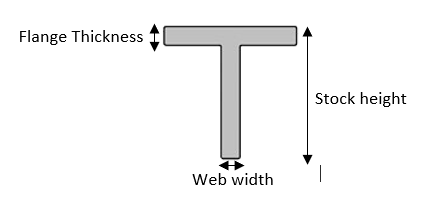Bar and Tube Fabrication Enhancements
Stock Form Recognition Improvements
In 2024 R1 SP2, aPriori improves standard stock recognition, even when there are small dimensional errors .in the CAD models.
In aPriori 2024 R1 SP2, the stock form recognition algorithms were enhanced to be more forgiving of small modeling errors when determining if a part is made from a standard stock form such as Channel, Angle, T-Beam, or I-Beam. For example, the part below is intended to be made from standard channel stock. However, the dimension for the left and right walls are slightly unequal, resulting in a slightly asymmetric cross-section. Previously such a part was not recognized as using channel stock. Instead, aPriori either recognized it as a generic extrusion (if the customer was licensed to the Extrusions manufacturing model), or aPriori failed to recognize any valid cross-section (stock form). Now aPriori appropriately selects channel stock for this part.
Some additional improvements were made for I-Beam and T-Beam stock recognition. These improvements help ensure that the stock meets certain aspect-ratio norms, in addition to being generally I-shaped or T-Shaped.
-
A new site variable, minBeamStockWidthToWebWidthRatio (3.0 by default), now affects I-Beam and T-beam stock identification. The ratio of the stock width to the web width must be equal to or greater than this value for aPriori to select I-Beam or T-Beam stock.
-
A second new site variable, maxTBeamFlangeThicknessToStockHeightRatio (0.5 by default), affects T-beam stock identification. If the flange thickness exceeds this fraction of the stock height, T-beam stock is not selected. That is, by default, if the flange is more than half the height of the beam, aPriori does not select T-beam stock.
Stock dimension definitions below:
Note that as in previous releases, aP Pro users can use the Stock Form and Alignment dialog to specify the desired stock form, if the stock form selected by aPriori does not match the design intent. To disable the aspect-ratio checks, set the new site variables to 0.

